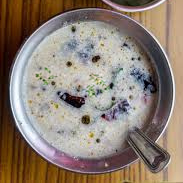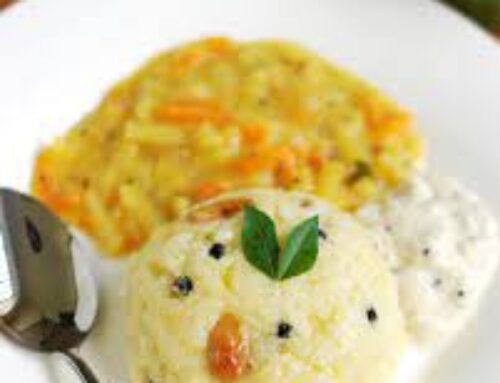Experience the flavorful pleasure of Coconut Chutney, a loved South Indian accompaniment perfectly complementing breakfast and snack staples like Idli, Dosa, Uttapam, and Medu Vada. Delve into two easy recipes – a conventional coconut chutney with aromatic spice infusion, and a speedy, lodge-fashion variant omitting the tempering system. Master the artwork of crafting this integral Indian aspect dish thru my consumer-pleasant, illustrated commands and educational video!
Understanding Coconut Chutney
Hailing from the wealthy tapestry of Indian delicacies, chutneys encompass a various range of condiments, every boasting its unique mixture of flavors. Among the plethora of alternatives, you can still locate recipes for tomato, coriander, peanut, tamarind, onion chutneys, and past. Originating from South India, coconut chutney reigns perfect, often accompanying breakfast and snack fare. Its essence lies within the best grinding of clean coconut meat with either inexperienced or dry crimson chilies and salt.
The addition of chilies imparts a diffused kick, even as garlic or ginger can raise its savory profile. A crowning glory of tempering, related to crackled mustard seeds, fried urad dal (black gram), crisp curry leaves, and asafoetida (hing), enriches the chutney’s simplicity with layers of taste.
The Secret to Success
For years, I’ve loved this sincere coconut chutney recipe, a staple in my culinary repertoire. Its enduring reputation in my family speaks volumes approximately its irresistible flavor! Rooted within the culinary traditions of Tamil Nadu, this rendition incorporates roasted chana dal, also called chana daria. These husked and break up black chickpeas impart a satisfying nuttiness to the chutney, improving its universal richness.
While roasted chana dal is without problems determined in India, its availability may vary some other place. You have the choice to either toast the lentils your self at domestic or pass them altogether. Fear not, as the coconut chutney will nevertheless boast its scrumptious taste without it.
If sparkling coconut isn’t inside reach, experience loose to substitute with frozen coconut or unsweetened desiccated coconut flakes. This adaptable recipe accommodates anything ingredients you’ve got handy.
You can personalize the basic recipe by using incorporating diverse ingredients. For instance, adding roasted sesame seeds, dry red chilies, and a hint of tamarind creates a lovely sauce ideal for pairing with steamed rice!
One of the beauties of coconut chutney lies in its versatility! Besides being a breakfast staple alongside idli, dosa, and vada, it also enhances severa South Indian snacks.
We enjoy it with dishes like Upma, Mysore Bonda, Onion Pakoda, Semiya Upma, Pongal, and plenty of greater. Once you flavor it, coconut chutney is bound to end up one in all your favorite condiments too. It pairs exquisitely with Idli Sambar, raising its attraction even in addition.
My Punjabi mom-in-regulation is a massive fan of South Indian delicacies, and this coconut chutney holds a unique area in her heart. If you, like her, have a penchant for all matters coconut, then this conventional coconut sauce is sure to win you over.
Step-by way of-Step Guide:
How to Make Coconut Chutney

Grinding Ingredients:
1. Place ½ cup tightly packed freshly grated coconut in a chutney grinder jar or a small grinder jar.
2. Add 1 to two chopped green chilies (alter in keeping with your spice choice), ½ inch chopped ginger (elective, may be substituted with 2 small cloves of garlic), and 2 tablespoons roasted chana dal.
(Note: One inexperienced chili yields about ½ to at least one teaspoon of chopped chilies. I’ve used about ½ teaspoon of chopped inexperienced chilies. For a spicier chutney, don’t forget adding 2 to 3 green chilies, depending on their efficiency.)
(Tip: You can replace Indian inexperienced chilies with ½ teaspoon of Serrano or Anaheim peppers. For Thai inexperienced chilies, upload more or less ¼ teaspoon as they % extra warmth.)
3. Season with salt to taste. Start with a conservative quantity, taste after grinding, and upload extra salt if needed. Remember, it is less complicated to add salt than to put off it as soon as brought.
4. Pour in three to four tablespoons of water. Adjust the water quantity to acquire your preferred chutney consistency. You can pass over the roasted chana dal if unavailable.
(Note: Roasted chana dal differs from raw chana dal. It’s crunchy and may be ate up at once, unlike its uncooked counterpart.)
5. Grind the aggregate until smooth. If the blades conflict or the chutney appears too thick, upload 1 to 2 tablespoons of extra water as wished.
6. Transfer the chutney to a heatproof bowl (e.G., steel, Pyrex, or glass). Taste and regulate salt if necessary.
Tempering Coconut Chutney:
7. Heat ½ tablespoon of sesame oil (gingelly oil, derived from raw sesame seeds) in a small pan or tadka pan over low warmth.
(Note: Alternatively, you may use sunflower oil, peanut oil, coconut oil, or any neutral-flavored oil.)
8. Add ½ teaspoon of mustard seeds and permit them to crackle.
9. Once the mustard seeds start crackling, upload ½ teaspoon of urad dal (break up and husked black gram).
(Note: If urad dal is unavailable, sense unfastened to bypass it.)
10. Add ½ teaspoon of cumin seeds. Omit cumin seeds if favored. Stir frequently and fry over low warmness.
Eleven. The urad dal must flip golden, even as the cumin seeds will crackle and brown.
12. Once the urad dal achieves a golden hue, introduce 1 dry pink chili (broken with seeds eliminated), nine to ten curry leaves, and a pinch of asafoetida (hing). If the pan becomes too warm, turn off the warmth after including the red chili, curry leaves, and asafoetida.
Be cautious because the oil might also splatter as soon as the curry leaves are added.
(Note: If you comply with a gluten-free weight-reduction plan, make certain that your asafoetida is gluten-free, as many commercially to be had sorts are processed with wheat products.)
13. Stir and fry for a few seconds till the curry leaves turn crisp and the red chili modifications shade.
14. Turn off the heat and at once pour the whole tempering, consisting of the oil, over the floor coconut chutney in the bowl.
15. Mix very well.
Sixteen. Serve the coconut chutney with your desire of idli, dosa, vada, pongal, or pakoda.
About Hotel-Style Coconut Chutney:
This quick coconut chutney recipe perfectly enhances idli, dosa, uttapam, and medu vada. It’s also vegan-pleasant and pairs properly with upma.
The rich, earthy flavor of this chutney comes from a generous amount of roasted chana dal.
While no tempering is involved, a short prep step complements the taste. Frying the curry leaves releases their fragrant essence into the oil.
Once this step is finished, clearly grind everything together, and your coconut chutney is ready to accompany dosa, idli, or vada.
This coconut chutney may be made using clean or frozen coconut. To streamline the procedure, I frequently grate and freeze the coconut in advance. This manner, whenever I need it, the coconut is with ease available for chutneys, sambar, or vegetable stir-fries.
for making : Authentic Tamil Nadu Ven Pongal: A Taste of Tradition
https://tastesy.in/recipes/authentic-tamil-nadu-ven-pongal-a-taste-of-tradition/
How to Make Hotel-Style Coconut Chutney:
Ingredients:
½ cup grated sparkling or frozen coconut
¼ cup roasted chana dal (roasted bengal gram)
½ inch ginger – chopped
1 to two inexperienced chilies – chopped
15 to twenty curry leaves
2 teaspoons oil
Salt to taste
¼ cup water, or as wanted
1. Heat 2 teaspoons of oil (sunflower or coconut oil) in a frying pan over low warmness. Add 15 to twenty curry leaves.
2. Fry the curry leaves, stirring often, until they come to be crisp, about 1 to 2 mins. Remove the pan from the warmth and set aside to cool.
Three. Combine all of the components (½ cup grated sparkling or frozen coconut, ¼ cup roasted chana dal, ½ inch chopped ginger, 1 to two green chilies, salt to flavor) at the side of the fried curry leaves and oil combination in a chutney grinder or small blender.
Four. Add ¼ cup of water or as wanted, and grind until a clean chutney consistency is achieved. Avoid including an excessive amount of water; for a thicker texture, use much less water.
Five. Serve the Hotel Style Coconut Chutney with simple dosa, rava dosa, rava idli, or uttapam. Enjoy it sparkling, or you can freeze the chutney for later use. It will closing longer within the fridge for some hours in bloodless temperatures as compared to warmer climates.
Variations of Coconut Chutney:
You can experiment with various components to create special flavors of coconut chutney. Consider including sparkling mint leaves, coriander leaves, garlic, yogurt, tamarind, tomatoes, onions, almonds, carrots, beetroot, unripe mangoes, peanuts, capsicum, or greens like spinach.
Each extra element will alter the flavor of the coconut chutney. For instance, adding tamarind or tomatoes will impart a sour taste, whilst fresh herbs like mint or coriander will add a fresh herbal taste to the very last product.
for more information checkout this:





